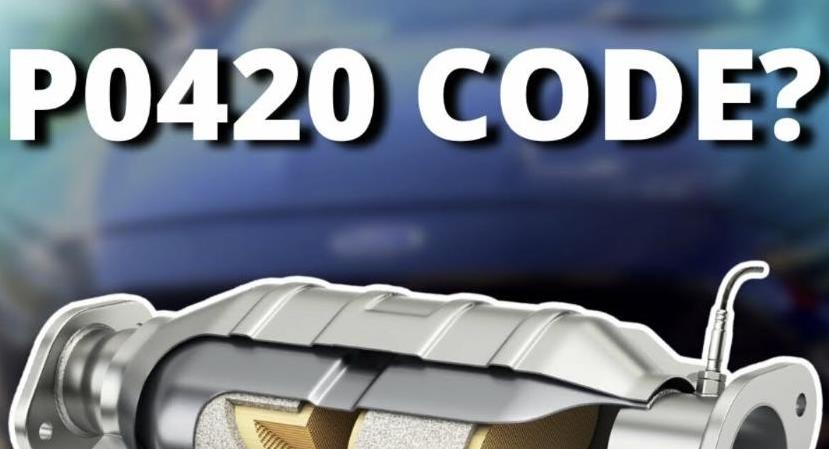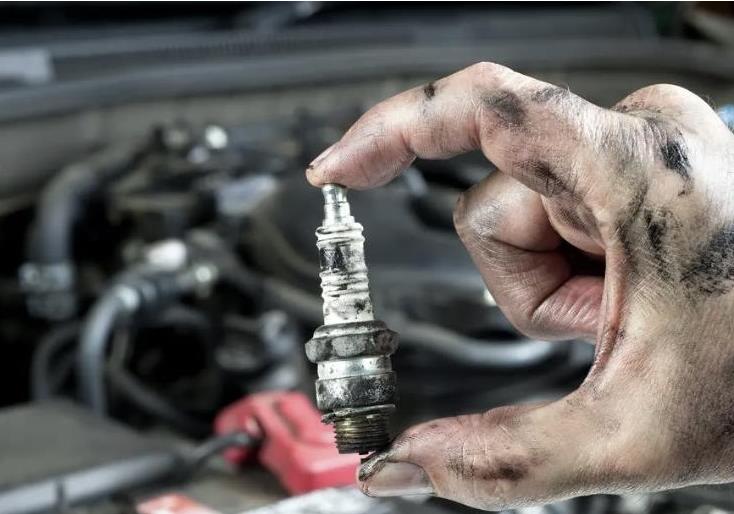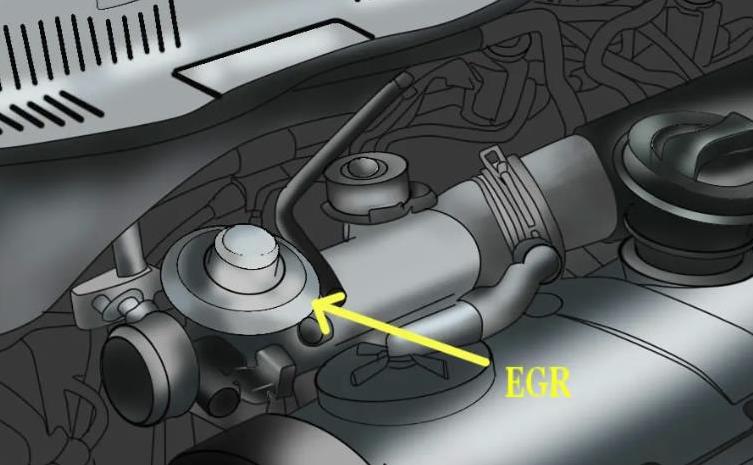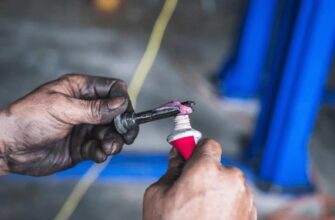The P0420 error code can be frustrating to get, but don’t worry – this guide will walk you through everything you need to know to troubleshoot and repair the issue. We’ll cover the meaning of the code, common causes, diagnostic steps, and tips for replacing the faulty part(s) so you can get your vehicle back on the road.
The P0420 code indicates that the catalytic converter is no longer operating at peak efficiency. This is often triggered by problems in other systems that are causing an imbalance in the air/fuel mixture or oxygen sensor readings. Some common causes include a faulty oxygen sensor, leaky exhaust manifold, bad spark plugs, faulty fuel injectors, and exhaust leaks upstream of the converter.
Properly diagnosing a P0420 requires methodically testing different components and systems. We’ll provide the key steps involved:
- Inspecting the oxygen sensors and wiring
- Checking for exhaust leaks
- Testing the EGR valve and related components
- Evaluating the spark plugs and ignition system
- Scoping the fuel injectors
- Flushing the converter if it’s still viable
In many cases, replacing the oxygen sensors or fixing an exhaust leak will solve the problem. Other times, the converter itself is bad and needs to be replaced. We’ll explain how to test it and share tips for removing and installing a new catalytic converter.
Let’s dive in and explore the intricacies of P0420 so you can confidently handle this error code!
What Does the P0420 Code Mean?
The P0420 code stands for “Catalyst System Efficiency Below Threshold Bank 1”. It indicates that the catalytic converter on Bank 1 is not operating at a normal efficiency level.
Bank 1 refers to the side of the engine that houses cylinder #1. Most 4 and 6 cylinder engines only have one bank. V-style engines have two banks – one for each cylinder head.
On OBD-II equipped vehicles, the Engine Control Module (ECM) monitors the efficiency of the catalytic converters by analyzing signals from the oxygen sensors located before and after the converter. When both sensors register the same, it means the converter is reducing harmful emissions properly.
But when the readings between the upstream and downstream oxygen sensors differ significantly, it points to the converter not properly filtering the exhaust gases. The P0420 code gets triggered when the converter’s efficiency drops below the minimum allowable threshold.

Why is Proper Catalytic Converter Operation Important?
The catalytic converter plays a crucial role in reducing the harmful byproducts produced by internal combustion engines. It uses chemical reactions to convert pollutants like hydrocarbons (HC), carbon monoxide (CO), and oxides of nitrogen (NOx) into less harmful carbon dioxide, nitrogen, and water vapor before releasing the exhaust.
Without a properly functioning catalytic converter, these dangerous emissions are released into the environment, causing air pollution and failing emissions testing. That’s why diagnosing and fixing P0420 codes quickly is important – you want your vehicle to be environmentally friendly and operate within legal emission limits.

Common Causes of a P0420 Code
There are several root causes that can trigger the P0420 error:
Faulty Oxygen Sensors: The oxygen sensors are one of the key components the ECM uses to monitor catalytic converter efficiency. If they are not providing accurate readings, it may mistakenly flag the converter. Damaged wiring to the O2 sensors can also cause a false P0420.
Exhaust Leaks: Any leaks present before the converter allows unburned fuel and emissions to enter the exhaust system before being filtered through the converter. This skews the oxygen sensor readings. Inspect the exhaust manifold gaskets, flanges, flex pipe, and related connections for leaks.
Ignition System Problems: Weak spark or engine misfires let unburned fuel enter the exhaust. The extra hydrocarbons overwhelm the converter and reduce its efficiency. Faulty ignition coils, spark plugs, and wires are common culprits.

Fuel System Issues: Injectors, fuel pump, or pressure regulator problems can cause a lean or rich fuel condition. This imbalances the air/fuel ratio and puts extra strain on the converter.
Faulty EGR Valve: If stuck open, the Exhaust Gas Recirculation valve allows too much exhaust back into the intake. This can cause engine misfires and overheat the converter.
Damaged Catalytic Converter: External damage, overheating, contamination, or age may have degraded the converter’s internal catalyst structure. This prevents it from properly filtering emissions.
Now that we’ve covered some common P0420 causes, let’s go through the key troubleshooting and diagnostic steps.
How to Diagnose a P0420 Code
Diagnosing a P0420 requires a step-by-step approach to rule out potential issues:
1. Scan for Codes and Check Service History
Connect a scan tool to pull any diagnostic trouble codes (DTCs). The P0420 is often accompanied by other codes pointing to sensor, ignition, or fuel system problems.
Check service records for any recent oxygen sensor, spark plug, or catalytic converter replacements. Their condition will determine if they should be inspected.
2. Perform a Visual Inspection
Look under the vehicle and inspect the oxygen sensors, wiring, EGR valve, exhaust system, and catalytic converter. Look for any damage, leaks, contamination, or disconnected components. Loose heat shields or impacted converter media are other signs of converter failure.
3. Check for Exhaust Leaks
Start the engine and listen/feel for any exhaust leaks preceding the catalytic converter. Spray a small amount of soapy water on each joint and watch for bubbles. Tighten any loose clamps or replace leaking gaskets. Retest for the P0420 after fixing any leaks.
4. Analyze Oxygen Sensor Waveforms
Compare the upstream and downstream O2 sensor data with a scope. The waveform amplitudes should cycle up and down and switch at a similar rate if the converter is working properly.
Irregular flatlining or differences between the switch rates indicates a faulty sensor or converter. Swap sensors between the up and downstream locations to pinpoint the faulty unit.
5. Monitor Short and Long Term Fuel Trims
Emissions problems often cause the ECM to adapt the air/fuel mixture. Monitor the live short term and long term fuel trim values. Out of range readings point to issues forcing the engine to run rich or lean.
6. Check the EGR System
The EGR valve, passages, and related components should be inspected for carbon buildup, proper operation, and leaks. Clean or replace any damaged parts and confirm the EGR is functioning properly.

7. Test the Ignition System
Misfires will overload the converter with raw fuel. Inspect the spark plugs for fouling or damage. Perform a cylinder power balance test to identify any weak cylinders. Check the ignition coils, plug wires, and connections for damage.
8. Evaluate Fuel Injectors
Using a scope, check the injector waveform patterns for any dead injectors or abnormal spray patterns. Leaking injectors are another common failure. Fuel pressure and volume tests help determine if the fuel pump or regulator need to be replaced.
9. Confirm Proper Converter Operation
If all other systems check out good, examine the converter itself. Look for damaged or melted insulation and internal media. Measure backpressure and monitor inlet and outlet temperatures looking for blockage. A lack of difference in readings indicates loss of conversion efficiency.
These key diagnostic steps should help isolate the root cause of a P0420 code to the faulty component. Next we’ll cover how to confirm converter failure and replacement options.
How to Check a Catalytic Converter
Once you’ve ruled out related issues that can throw a false P0420, further checks need to be performed to verify the catalytic converter is actually bad:
- A clogged converter will create excessive back pressure in the exhaust system. Use a manometer to compare the backpressure readings before and after the converter. Significant deviation points to a blocked substrate.
- Monitor the temperature of the exhaust before and after the converter. At idle, you should see a temperature drop of 100-300 degrees after the gases pass through. No change or lower outlet temperature indicates poor efficiency.
- Use an infrared temperature probe on the external shell of the converter to check for excessive temperatures above 1000 F during driving. This can signify internal damage and overheating issues.
- A roaring sound or potential exhaust leaks when tapping on the converter signals detached internal baffles or substrate. Remove the oxygen sensors and visually inspect inside the passages for breakdown.
- Check for contamination using a vacuum tester with the engine running. If a reading is present, it means exhaust gases are being drawn into the intake from leaks in the converter’s internal chambers.
If your diagnostics confirm the catalytic converter is no longer functioning properly, then it will need to be replaced to fix the P0420 code and restore proper emissions.
Replacing a Faulty Catalytic Converter
Bad catalytic converters must be replaced to restore engine performance and avoid environmental pollution. Here are some key steps for this repair:
- Only use a direct-fit OEM or high-quality aftermarket catalytic converter specifically designed for your vehicle’s engine, emissions level, and configuration. Low-quality units often fail prematurely.
- Disconnect the oxygen sensor electrical connectors and remove any mounting hardware or brackets securing the converter to the exhaust pipes. Caution – the converter will still be very hot!
- Support the exhaust system and cut the inlet and outlet pipes before and after the converter. Remove the old unit and clean the mounting surfaces.
- Install the new converter in the same orientation using high-temp anti-seize on the pipe connections. Tack weld the flanges and allow it to fully cool before checking for leaks.
- Reroute and reconnect the oxygen sensors. Make sure wiring has proper clearance from hot exhaust components.
- Clear any remaining P0420 codes and take the vehicle for a test drive to confirm normal operation. Annual converter inspections help avoid future breakdowns.
Replacing a faulty catalytic converter along with any other damaged emissions components is key to getting your vehicle back in good working order and passing emissions tests.
FAQ About Troubleshooting P0420:
Here are some common questions and answers about diagnosing and fixing the P0420 catalytic converter efficiency code:
Q: Can a P0420 be caused by a loose gas cap?
A: It’s unlikely a loose gas cap alone would trigger a P0420 code. However, it can cause an evaporative emissions leak that contributes to converter inefficiency. Always ensure the cap is on tight.
Q: Do oxygen sensor spacers or fuel additives help cure a P0420?
A: No – manipulation of sensor signals or exhaust properties provides only temporary masking of symptoms. The root cause of converter damage or failure must be repaired.
Q: Is it safe to drive with a P0420 code?
A: It won’t immediately damage the engine, but allows excess pollution. Also, ignoring efficiency problems can lead to complete converter failure. Diagnose and repair the issue as soon as possible.
Q: Can you clean a catalytic converter?
A: It’s not recommended as a long-term fix. The internal structure is delicate and usually can’t be sufficiently restored by cleaning agents. Replacement is better if the converter is determined to be faulty.
Q: How much does it cost to replace a catalytic converter?
A: On average $1,200-1,800 for OEM converters installed. Quality aftermarket units run $800-1,500. Labor is 1-3 hours. Shop around for the best parts and installation deals.
Key Takeaways on Fixing P0420 Codes:
- The P0420 code signals a problem with Catalyst System Efficiency for Bank 1
- Faulty oxygen sensors, exhaust leaks, ignition issues, and converter damage are common causes
- Methodically diagnose other systems before condemning the converter
- Inspect sensor signals, fuel trims, EGR system, ignition components, injectors, and the converter
- Replace any damaged parts and confirm the converter is still underperforming
- Replace the catalytic converter if determined to be internally damaged and efficiency is too low
- Use OEM or high-quality aftermarket converter designed specifically for your vehicle
- Annual inspections of the catalytic converter help prevent failures
Properly diagnosing and fixing a P0420 catalytic converter efficiency code takes patience and care. Follow the outlined troubleshooting steps, confirm converter failure, and replace any damaged components to get your vehicle’s emissions back in good working order. This will restore engine performance and fuel economy while preventing environmental pollution.








